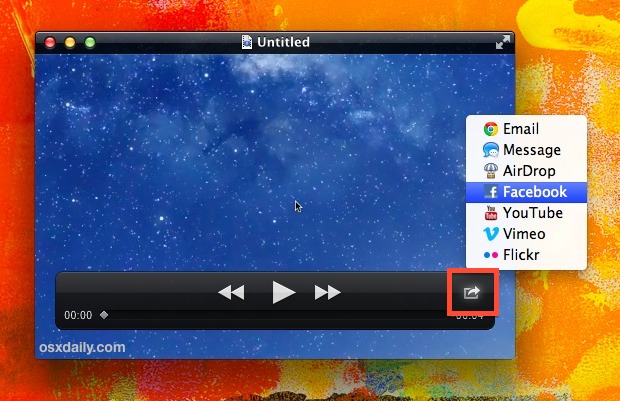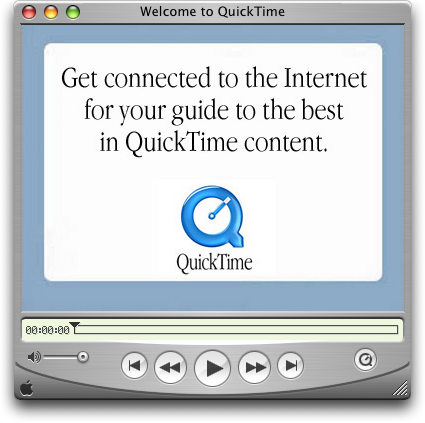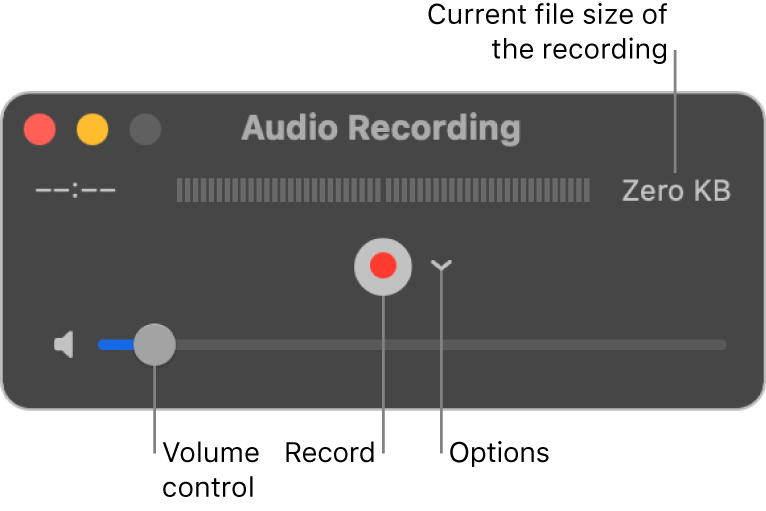I have QuickTime Player Version 10.4 on my Mac with OS 10.11.6. I have just tried to use it to play an iMovie from a few years back, and it tells me I can't and is prompting me to do the OS X El Capitan 10.11.4 Combo Update! QuickTime 10.0 was first demonstrated at WWDC in 2009. The application ships with Mac OS X 10.6 and higher.
- If you want a bigger iPhone screen, you could buy a newer model — or, you could learn how to mirror your iPhone's screen on a Mac computer.
- Using a Mac's QuickTime player, you can easily mirror your iPhone screen on your Mac.
- You can also use the third-party app Reflector to optimize iPhone content that is set up for AirPlay to be played on your computer.
- Visit Business Insider's Tech Reference library for more stories.
One of the iPhone's greatest assets is its connectivity. Built into Apple products are several ways to easily share what you're viewing or working on from your iPhone to a Mac or iPad.
This can be useful if you want to put a photo album or display an app on your computer, and works really well with video content accessed via your iPhone's apps.
If you want to use your Instagram mobile app on somebody else's Mac, for example, you can plug your iPhone in and project your Instagram directly on the computer.
Because connectivity within the Apple family has been a priority nearly from the beginning of the company's existence, you can mirror your phone to your computer easily using just QuickTime and your iPhone's default operating system.
How to mirror your iPhone to a Mac using QuickTime
1. Connect your iPhone to your Mac using your Lightning to USB cable.
2. Open Quicktime on your Mac.
3. Click on File in the menu bar at the top of the screen.
4. Scroll down to 'New Movie Recording.'
5. Next to the red record button (bottom middle), click on the down arrow. You should see your iPhone named in this list. If it's not there, try disconnecting and reconnecting your iPhone.
© Ryan Ariano/Business Insider Select your iPhone from the dropdown menu to connect to it. Ryan Ariano/Business Insider6. Tap your iPhone.
7. Your phone is fully mirrored on your computer, in the exact shape of your iPhone screen.
If you press the red record button, you can also record a video of your iPhone's screen.
There is another way to broadcast iPhone content on your Mac: Connecting your phone to Reflector 3, a third-party app for your Mac.
While using QuickTime as a mirror will give an exact replica of your iPhone - shape and all, including all apps and gestures you make on the phone - Reflector will optimize content streamed through your iPhone to be displayed on your Mac. It's limited only to content that allows for AirPlay, however, and so it will not reflect your phone in its entirety.
If you want to watch, say, a content-provider app on your laptop, or you want to broadcast a Keynote presentation, this is when Reflector comes in handy.
Note, however, that Reflector is only free for a week - after that, you'll have to pay $15 to keep using it on your Mac. And during your free trial, there will be a watermark on the screen whenever you mirror.
How to mirror your iPhone to a Mac using Reflector
1. Download Reflector 3 on your Mac.
2. Open the Reflector program on your Mac.
3. Open content on your iPhone which allows for AirPlay - in this example, I used the NFL app.
4. Hit the AirPlay symbol (it's a computer screen with a solid triangle at the bottom).

5. It will ask you what you want to AirPlay to; tap on the name of your Mac.
6. Your iPhone will ask for an AirPlay Code.
7. An AirPlay code will show on your Mac.
8. Type in the AirPlay code on your iPhone.
9. Your iPhone content will now show up on your Reflector program on your Mac.
Reflector also has versions available on PC.
© Ryan Ariano/Business Insider Your AirPlay content will appear on the computer in the exact quality it appears in on your iPhone. Ryan Ariano/Business InsiderRelated coverage from Tech Reference:
If it’s your initial days of editing videos on a Mac, then chances are that you’re looking at a bunch of video clips to add, combine, and re-arrange into a single video. With so many files to be put into the mix, you will require a video editor that stitches together a bunch of clips into a single video file.
In this post, we will help you learn how you can combine videos into a single file on a Mac using two methods that we have listed below.
Method #1: Using the QuickTime Player app
No matter the level of editing you do, the QuickTime Player app that comes preloaded on your Mac has all the features you may require for basic and lightweight editing. While it doesn’t promise a ton of features like iMovie, it does the basic things right and you can easily combine and merge two pr more videos into one using this app on your Mac.
To get started with this, open one of the videos you want to combine others with, preferably, the video you want to be played at the start. By default, QuickTime will be the video player that the file may open up with, so you can open it up by double-clicking on it.
In case it’s not, you need to right-click on the video file and select Open With > QuickTime Player.
Now, head over to the folder from where you want to add another video to the current project.
You can add the second video to the first one by simply dragging and dropping it to the QuickTime Player where the first video is open. You can add multiple videos to the project by dragging and dropping more clips in the same manner.
Alternate method of adding clips: Another way of adding a clip to a video is using the Edit option with the QuickTime Player opens in the foreground. After the first video is open, click on the ‘Edit’ tab in the Menu bar, and select the ‘Add Clip to End…’ option.
You can now browse to the folder where the other video(s) is located, select the video, and click on the ‘Choose Media’ button under the video preview at the bottom right corner.
To change the order of video playback, you can drag the clips left or right across the seek bar below.
You can trim or cut each of the individual clips by double-clicking on one clip, and then adjust the size of the clip by moving the left and right margins according to your preference. To confirm the video trimming, click on the ‘Trim’ button after making the necessary changes.
After you have added all the clips to the same video and re-ordered them, you can proceed to save the new video. To save the video file, make sure the QuickTime Player is the active window on your Mac, then go to the ‘File’ tab on the Menu bar, click on the ‘Export as’ and then select the video resolution you want it to be saved as.
In the next screen, create a name for your video file, select where you want it to be saved, and then click on ‘Save’. That’s it. You have successfully created a video by merging two or more videos using QuickTime Player on your Mac.
Method #2: Using the Shotcut app

Although Apple’s QuickTime Player is the best option out there if you’re looking to merge two or more videos together, there are other alternatives if you want to do more to the video that you’re about to create. Your next best option is Shotcut, an open-source, cross-platform video editor that you can use on your Mac without paying a dime.
To use the app, you need to go to Shotcut.org and download the latest “.DMG” installer available for macOS. You have to manually download and install the app this way because Shotcut isn’t available on the Mac App Store. But you need not worry, as Shotcut is a verified app and a widely used one at that.

Quicktime Player App For Mac
To install the app, you need to first download the “.DMG” file from the aforementioned source, open the file by double-clicking it, and this will load up the main Shotcut installer volume. You can now install the app by dragging the Shotcut app icon to the Applications folder that’s available inside this window. After the app is installed, it should appear inside the Launchpad on your Mac.
You can now start editing your video. For that, open the Shotcut app on your Mac and then click on the ‘Open File’ button at the top left corner of the Shotcut window.
A new screen will appear prompting you to go to the location of the video files you want to edit. Browse to the folder/location from where you want to add the clips onto a single file. Instead of adding video clips one by one, you can select multiple ones that you wish to add. Once you have selected all the clips to add to the video, click on the ‘Open’ button at the bottom right corner of this window.
The newly added clips will appear inside the ‘Playlist’ section inside the Shotcut app.
To start adding the videos to a project, you will need to add them to the Timeline. You can do that by selecting the video you want to add first, and then clicking on the Paste icon inside the Timeline section. You can also drag and drop the video to the box inside the Timeline section as well.
Your first video will now appear inside the ‘Timeline’ section.
You can now add the next video by selecting the clip, then dragging and dropping the clip onto the Timeline.
While adding this next clip, you need to make sure that the clip sticks to the end of the previous video so that there’s no gap when the video is played. Repeat the process for adding more clips to the same video.
Shotcut lets you modify other aspects of the video like color, audio, FX, and more to make the video look more presentable.
After making all the necessary changes, keeping the Shotcut window active, click on the ‘File’ tab in the Menu bar, and select the ‘Export Video’ option.
Quicktime Player App For Mac Air
The ‘Export’ section will now appear inside the Shotcut app. In this section, select the presets (format) you want to save the video as from the list on the left, and then click on the ‘Export File’ button.

Free Quicktime App For Mac
The next step is to name the newly created video and choose a location you want to save it to. After that, click on the ‘Save’ button. The video should appear at the chosen location when ready.
That’s it! You can easily combine two or more videos using either of the methods mentioned here.
RELATED
